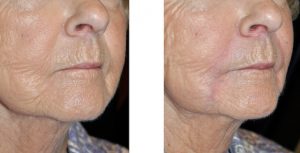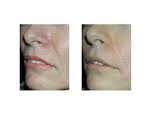Injectable fillers, like Botox, have revolutionized the approaches used for non-surgical facial rejuvenation. While Botox is a paralyzing agent for decreasing expressions, fillers are for adding lost volume or volume that one never had. While each has its own specific facial uses, they are often used in combination for a more significant facial effect.
Injectable fillers are a ‘southern’ facial or perioral treatment method with its major uses being lip augmentation and nasolabial fold reduction. Its use in the nasolabial folds, also known as the facial parentheses, is an actual FDA-approved indication and is so marketed therefore. Lip enhancement is widely done with fillers but is actually not a formally FDA-approved indication.
Injection into the nasolabial folds is a very valuable and effective method of temporarily softening their depth. Deepening nasolabial folds is primarily a female concern and a significant one that is associated with an aging appearance. There often exists, however, a discrepancy in expectation for this injection procedure that is in contrast to that marketed and promoted by the manufacturers.


There are other options for nasolabial fold augmentation including autogenous and synthetic implants and even excision in the rare patient. Having a patient discussion about the range of treatment options and choosing a value-oriented approach for the long-term is a useful patient service.
Nasolabial fold injections are not a magic eraser or will not usually result in complete elimination of their presence. Until more permanent injectable fillers that have safety profiles comparable to the more temporary ones are developed, patients need to be willing to accept a temporary mild to moderate reduction in their depth.
Dr. Barry Eppley
Indianapolis, Indiana


